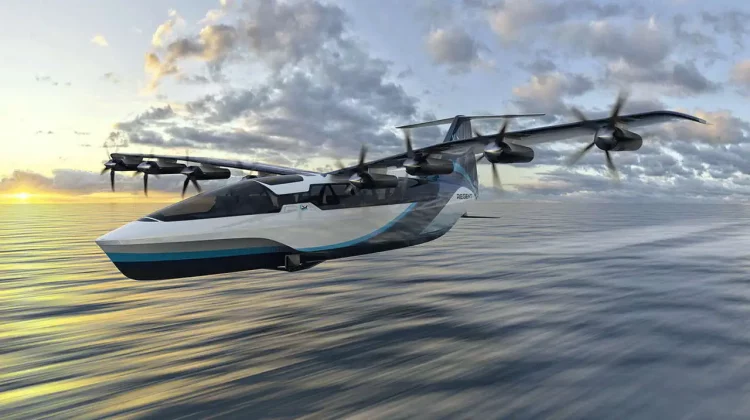
All-electric coastal aviation start-up REGENT has used the Siemens Xcelerator portfolio of cloud-based software and services to help pioneer a new category of vehicle called the seaglider, a high-speed zero-emission vehicle that operates exclusively over the water to drastically reduce the time and cost of moving people and goods between coastal cities.
The REGENT seaglider, an all-electric wing-in-ground-effect (WIG) vehicle, travels in one of three modes: floating on its hull near the dock, foiling on its hydrofoils at up to 40 knots as it comes in and out of port, or flying above the waves at 160 knots while cruising to its destination. When in flight, it operates a few metres above the surface of the water, relying on the ground effect phenomenon – essentially flying on a cushion of air.
The seaglider combines the high speed and comfort of an airplane with the low operating cost of an electric vehicle. It differs from past WIGs due to its hydrofoils, distributed electric propulsion and aerospace fly-by-wire controls. These elements enable safe harbour operations, increased wave tolerance and a comfortable passenger experience.
‘At REGENT we are focused on bringing a revolutionary new vehicle to the transportation market with the potential to change how both people and freight move over the water,’ said Mike Klinker, chief technical officer and co-founder of REGENT.
REGENT’s flagship seaglider, the 12-passenger Viceroy, will be to service routes up to 290 kilometres in length with existing battery technology and routes up to 800 kilometres in length with next-generation batteries, all via existing dock infrastructure. Additionally, its operation as a wing-in-ground-effect vehicle above the water enables maritime testing and certification. This is an efficient pathway to entry-into-service, allowing customers to experience high-speed, zero-emission coastal mobility sooner than electric aviation options, while maintaining similar levels of safety.


